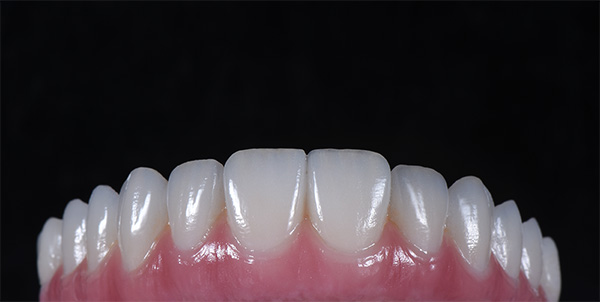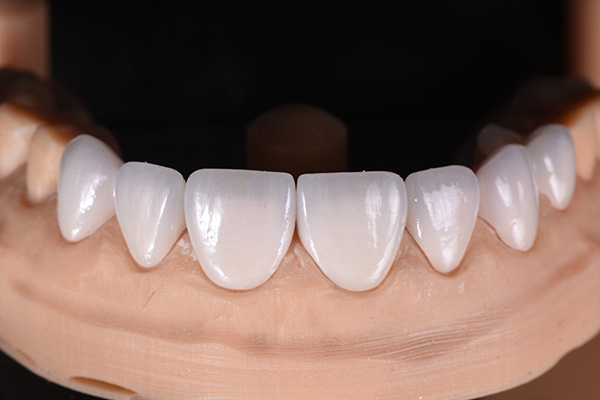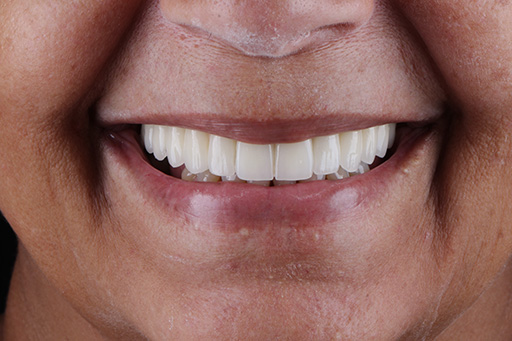Follow our treatments
Prosthesis Protocol

The smile of our patients
Hybrid or ceramic prostheses - Advancement in your quality of life
Hybrid or ceramic prostheses are rehabilitative treatments intended for patients who have lost all their teeth or who need to be extracted in the same arch. They function as a fixed denture, fully attached to 4 to 6 dental implants, both in the mandible and maxilla.
How it works
We will explain how these prostheses work and their ability to restore self-esteem and quality of life.
Dental implants are titanium structures with specific treatments on their surface that are capable of fixing themselves to the human bone through the phenomenon of osseointegration, leaving them firm to be rehabilitated later with ceramic or resin crowns.
Protocol-type prostheses are made of resin or ceramic, both with a reinforcement structure behind them.
They promote greater stability, safety and comfort when compared to conventional removable prostheses.
Stability
As it is a prosthesis joined and supported entirely by implants, bite forces (occlusal forces) are distributed simultaneously.
Comfort
Does not hurt or traumatize soft tissues, gums and mucous membranes during chewing.
Security
There is no movement of these prostheses, so it is possible to smile more safely in addition to chewing more precisely.
Natural Aesthetics
In all cases, we use state-of-the-art resins and ceramics and therefore achieve fantastic results.
schedule your consultation
Ready to experience exceptional dental care?
Contact us today to schedule your consultation and begin your journey to a healthier, more beautiful smile.


Balance, chewing function and aesthetics go hand in hand.
These are fixed prostheses that require hygiene just like natural teeth. Even without the possibility of removal by the patient for hygiene, some techniques are provided to better maintain health around the implants. Furthermore, to ensure the longevity of the treatment, periodic visits to the dentist are essential.
International-class implants and materials that guarantee greater performance with high-standard results.
Better quality of life
Predictable, resistant and long-lasting treatment
It is important to highlight that many issues need to be evaluated to begin treatment and establish its phases.
Process phases
STUDY PHASE
The first consultation consists of a clinical assessment to understand the patient's needs and expectations. In it, a very detailed interview with questions about oral and systemic health makes it possible to understand the patient's general situation. From this, laboratory and radiological exams together with a digital mold with an intra-oral scanner are requested to store as much information as possible.
STUDY PHASE
After studying the case, planning is presented and doubts about treatment possibilities are discussed. Informative terms, consent and preoperative medication are given to the patient.
SURGICAL PHASE
At this point, the second phase of treatment begins, the surgical phase, with extractions and installation of dental implants. At the end of the procedure, the patient receives a letter with all guidance on the post-operative care to be taken and must be followed strictly for better osseointegration of the implants and healing of the region. Direct contact is maintained during that week.
PROSTHESIS PHASE
The patient returns within 7 to 10 days to remove the surgical stitches and install a temporary prosthesis fixed to the implants. All surgical and provisional phases are resolved in 4 consultations. After 4 months, the implants are molded to create definitive resin or ceramic prostheses.
Care and maintenance
Implants need care and maintenance just like teeth. A periodic review for hygiene and monitoring is extremely important for peri-implant health over the years.
FAQ
Common questions
Here, we address some of the most common questions that patients tend to have.
If you didn’t find the answer you’re looking for, don’t hesitate to contact us.
No, what exists is a failure in their osseointegration, which according to the literature represents between 3 and 5% of cases in healthy patients. These failures may be related to numerous factors such as uncontrolled periodontal diseases, systemic diseases, low bone quality, patient non-cooperation in postoperative care, risky habits (smoking and alcoholism), specific medications, among others.
It is removed and another implant is installed immediately or later depending on each case.
